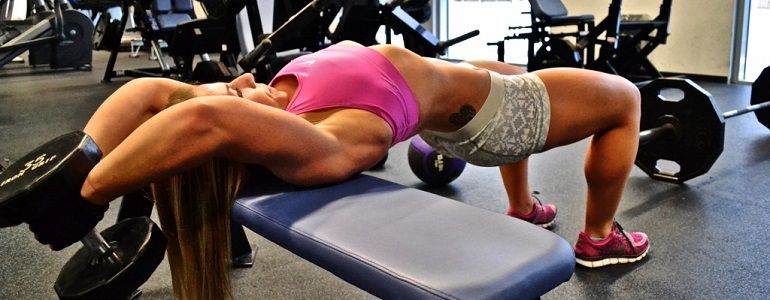
There is a lot of controversy in the fitness world regarding which muscles the pullover trains. Therefore, there are many who hesitate to incorporate this exercise into their back, shoulder or chest routine.
The truth is that when performing this exercise with dumbbells, both the pectorals and the dorsal muscles are activated, but the pectoral muscles do it to a greater extent than the dorsal muscles. This is due to the fact that when exercising the dumbbell pullover, the dorsal activation occurs at the moment in which we change from the eccentric phase to the concentric phase, that is, when we have the dumbbell at the lowest point. From there, the activation of the lats decreases and that of the pectorals increases.
A very effective alternative to achieve a greater activation of the lats, if you are interested in including the pullover in your back routine, is to do it with a high pulley. In this way the tension on the lats is constant throughout the exercise and also the exercise becomes much safer by not forcing the shoulder joint so much.
If, on the other hand, you prefer to include it in your pectoral routine, your best option is to do it with a dumbbell or a Z bar. This exercise achieves less activation of the pectoral muscles than a bench press, but it can be interesting as a complementary exercise to the previous one if you have aesthetic goals.
How to perform the dumbbell pullover
As for the correct way to do it, there are several possibilities. You can choose between supporting the entire trunk on the bench or just the scapulae.
In the first case, we position ourselves to perform the exercise in the same way that you would position yourself to perform a bench press, including scapular retraction to provide more security to the shoulder joint.
If, on the other hand, you choose to support only the area of the scapulae (the upper part of the back) on the bench, you will achieve a greater activation of the glutes and the abdominal area to maintain the stability of the spine. To do this, lie on your back perpendicular to the bench, supporting the upper part of your back on it. The key is to raise the pelvis until the entire trunk is at the same height as the scapular area that we have on the bench and maintain this position throughout the exercise.
Another important aspect when performing the dumbbell or Z-bar pullover is the range of motion you must perform so as not to compromise your shoulders. This range will be different for each person and to find out what is the right range for you you must perform the shoulder flexion test.
To do this, stand with your back fully against the wall and your legs bent so that the entire surface of your back is in contact with the wall. Now, without bending your elbows, raise your arms and try to touch the wall with your thumbs. The range of the pullover should be as high as you can raise your arms without arching your back when performing the test.
That’s all for today. As always, don’t forget to share this post on your social networks if you found it useful and don’t hesitate to ask any questions in the comments section below.
Image via Flickr